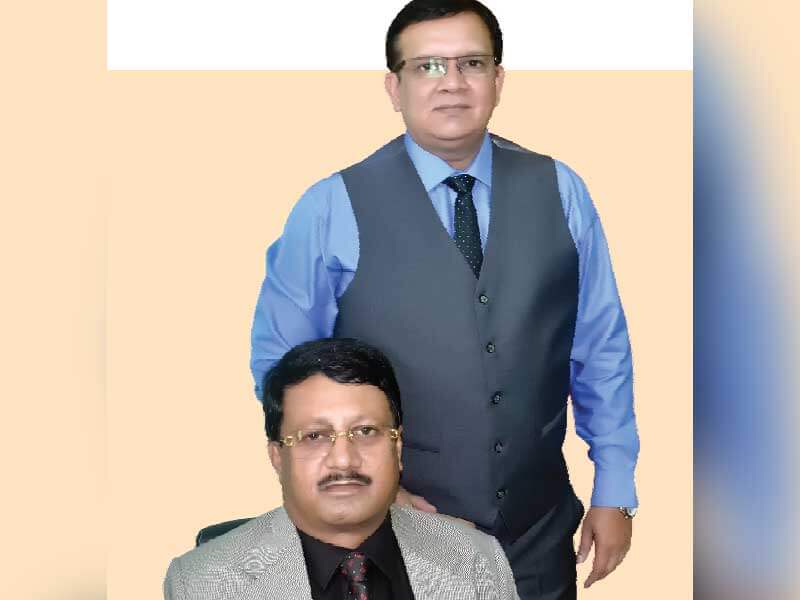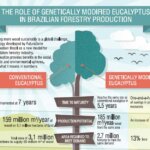The technology input in the Indian pulp and paper industry has been swiftly ascending to occupy center stage among top priorities. Who can better understand this trend than the link companies, between technology makers and paper industry?

Foresight International, founded in 1993, has come a long way in ensuring smooth supply of technology to the Indian paper industry. The company has been able to provide locally most of the technical services and back-up of international standard. Collaborating with technology leaders such as A. Celli-Italy, Brunnschweiler- China, IKS- Germany, BTG-Switzerland, Milltex -Italy, Heimbach-Germany, BVG- Germany, Johnsonfoils Paperchine-USA, William Kenyon Ltd-UK, Yamauchi Corp., etc., Foresight International has an impressive repertoire of technology, machines, and tools for the paper industry. The company also has signed contract with world leaders in effluent treatment and plants modification.
Paper Mart recently had opportunity to talk with Mr. Ashish Mukherjee, Foresight International who furnished details of what the company does with an outline of future course it wishes to take. Excerpts:
Paper Mart: How has been the year 2014 for Foresight International? What all progresses has Foresight international made during the year?
Ashish Mukherjee: 2014 indeed was a good year in terms that all product performances were at their best. The best performance was achieved out of most paper machines clothing this year. We feel that scientific approach of customers toward machine operation is growing, though gradually. Sales-wise as well, it was a good year; we were successful in selling one rewinder for Acellie, nine sheeters for board making including several rebuilds of wire part.
PM: Foresight International was launched in 1993. What changes do you think have taken place in paper industry in terms technology requirement since then? Do you find any radical shift in your technical and technological inputs to the industry?
AM: The main shift that we have observed is from technological requirements to pricing. We have found that the paper industry is mostly is switching to look price first, leaving aside a few in the industry who value technology as well. It may sound bitter, but this is the truth. The underlying issue is that the focus has turned from “economy” to “costing”. This, of course, has some short term benefits, but it’s mostly a losing strategy in long terms. You also ought to note that the most managements have started putting pressures on employees to perform in terms of cost. This cost cutting is being done at times when it’s least needed without any pragmatic thought process. When this cost pressure percolates down to suppliers, they also need to perform. But, do you think they will be able to do without reducing their own cost? They also start trimming their “fat”, which at times trims of “muscles” too. We feel the paper industry should get into the process of introspection of what is being done and what should be done.
PM: Sustainability has become one of the mainstays of all industrial operations including paper. How it has affected the technology requirement lately? Has it altered the range of capital equipments and consumables you offer?
AM: To be honest, this is a topic which is being discussed for the past 35 years, at least as per our experience of the paper industry. When I visited the first IPPTA meeting 32 years back, everyone talked about the bad financial health of the paper industry and same discussion continues even today. The whole industry has expanded to reasonable width and height; this proves that it is sustainable. But, sustainability is dynamic in nature and it often leads to shifts in technologies and applications. We never found the dearth of inquiries, but approach has changed. Newer technology is not so welcome because of being expensive. The traditional technologies having low overall cost are more acceptable.
PM: What has been the most significant addition to your product portfolio that you consider vital for today’s paper industry in terms production growth, resource conservation, operational optimization, etc.?
AM: Our principals keep investing in developing technology laterally, vertically or both. We always take the much needed initiative in getting regular training in those technologies and share detailed information of the same with our customers to convince them for getting it implemented. Our training leads us to assist in developing the learning curve at the customer end which is important for implementation of any newer technology.
The latest addition in our portfolio is the introduction of MBBR (Moving Bed Bio Reactor-Heart of Effluent treatment plant) technology at waste water treatment plant and it is under launch. The technology has seen a steep increase in demand in Europe and US due to its low Capex and Opex cost. We have bought it from a company called Aqwise, Israel who is pioneer and leader in MBBR technology for both aerobic and anaerobic treatment plants.
Due to increasing demand of energy consciousness Brunnschweiler Hoods has become a hot cake. Small to large paper mills are interested to install at least the high efficiency heat recovery system and improve efficiency of their hood. Apart from this the mills who were interested in buying second hand sheeters have got their heads turned toward new high quality sheet cutters which has time and again proved cost effective rather than buying old sheet cutters in medium to long terms.
We should also note that rebuilds will become a priority without changing the dimensions of the machine as high quality and high volume production would be needed for same given infrastructure of machines available. In this area, our principal Paperchine (Johnsonfoils) coupled with our 78 machine rebuild experience can do a commendable job for all paper makers. This area Foresight has substantial experience in house to do all job without much help form principals hence success rate in terms of rebuild results are very high.
PM: What are Foresight’s success factors? Where does its core strength lie?
AM: The main success factor for Foresight is the word “training” i.e. training our internal manpower. We have always found that if you do not have high customer support locally, most customers would not feel confident on the technology you wish to introduce. We, therefore, invest a lot internally on training. Our core strength is our efforts to provide customers local support as far as we can, followed by the high level of support from our principals from overseas.
PM: What’s at the top of your agenda for 2015?
AM: The top agenda is to gear and get trained for 2016 which we feel will see a sea change in the paper industry’s approach to market. This will lead to more standardization of product mix rather than scattered product mix. This would lead to longer runs of manufacturing units with higher production rates. Hence, the demand for service is the highest priority.
PM: Going forward, any new development that you would like to share?
AM: We wish to proceed on waste water treatment technology up-gradation. We feel we can do lots of value addition in the given scenario of stricter discharge norms. The talks are on for putting online BOD/COD measurement units for the quality of discharge water into rivers, whose data and trends should be uploaded on the respective websites of all paper mills to be reviewed by authorities any time they want. This will also lead to lots of water recycling in small and large loops which will have its own challenges to be met. Hence, we will be gearing up for these challenges from the hardware side.



